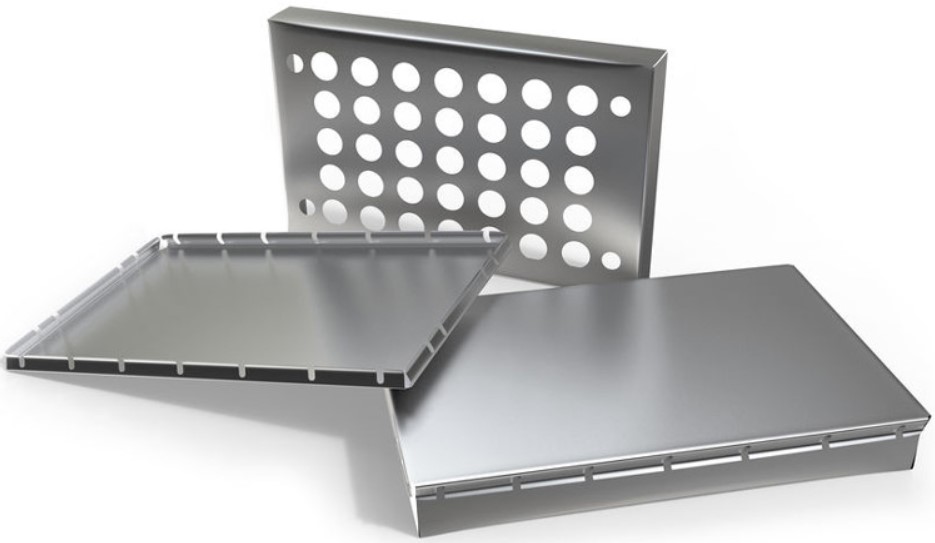
When it comes to modern product design, lightweight is the new watchword. From phones and laptops to furniture and vehicles, consumers want sleek, portable products that are a breeze to transport. At the same time, manufacturers can’t sacrifice strength, durability, or safety. The quest for lighter-yet-tougher materials is driving innovations across industries.
The Mighty Capabilities of Lightweight Metals
You might think of metals as heavy and dense. But advanced metallic materials are bucking that stereotype. Aluminum, titanium, and magnesium alloys pack a heavyweight punch while being incredibly light. For example, aluminum alloys used in aircraft bodies and components can be as strong as some steels, yet one-third the weight. This light-but-mighty combination makes vehicles more fuel efficient without compromising safety.
Putting Nature’s Design to Work
Some of the most impressive lightweight materials draw inspiration from the natural world. The experts at Axiom Materials say that honeycomb is a prime example: those hexagonal hollow walls give tremendous strength for the amount of material used. Mimicking this efficient natural design, honeycomb cores made from aluminum or lightweight polymer composites are finding use everywhere from aircraft fuselages to energy-absorbing bike helmets. Similarly, modern sandwich-structured composites alternate thin layers of stiff materials separated by thick lightweight cores.
The Awesome Properties of Foams
While traditionally thought of as flimsy packing material, advanced polymer and metallic foams are gaining popularity for their impressive strength-to-weight ratios. For example, metallic foams made by injecting gases into molten aluminum or other metals have a sponge-like structure that’s ultra-light yet can bear heavy loads. Complex 3D printing techniques can now produce foams with intricately designed porous structures optimized for specific applications.
Secrets of the Spider’s Silk
Spider silk is an extraordinary natural material that’s stronger than steel, yet surprisingly lightweight and flexible. Through biotechnology, scientists can now produce synthetic spider silk proteins for use as high-performance fibers. Clothing, ropes, and medical materials made from these bio-fibers could be tougher than Kevlar while being lighter and more stretchy. And since the silk proteins come from sustainable sources like plants, they’re an eco-friendly material of the future.
Inflating Materials with Nanotubes
Adding impossibly miniscule ingredients like carbon nanotubes can radically transform the properties of conventional materials. When properly dispersed in polymer foams, nanotubes create an ultra-sturdy 3D network that prevents the closed cells from breaking down and losing volume over time. Yet the material remains delightfully lightweight. These durable, buoyant polymer nanocomposite foams may soon replace today’s heavier insulations and packaging materials.
Lightweight Revolution in Architecture
Lightweight materials are also transforming the construction industry, allowing bolder, more expansive architectural visions to take form. Innovators are harnessing advanced composites to build massive yet lightweight bridges, roofs and other structures that would collapse under their own weight if made from heavier conventional materials.
Carbon Fiber Everywhere
You’ve likely encountered carbon fiber reinforced polymers (CFRP) on racing bikes and luxury cars where high strength and light weight are priorities. But this ultra-stiff, ultra-light material is going mainstream thanks to more automated and affordable production methods. Soon we may see entire airplane fuselages, wind turbine blades, and even residential construction using carbon fiber composites to achieve new heights of lightness and durability.
The Environmental Upside
Beyond their remarkable physical properties, many lightweight materials offer sustainability advantages, too. Reducing the weight of vehicles and other transportable goods means less fuel is consumed while hauling them around.
Conclusion
Lightweight may initially seem like a cosmetic goal. But harnessing lighter-yet-tougher materials has profound effects, enabling greener transportation, minimizing resource use, and sparking visionary designs that could scarcely be achieved with heftier traditional materials. From soaring architecture to electric vehicles to spacecraft, the future will be incredibly light.






